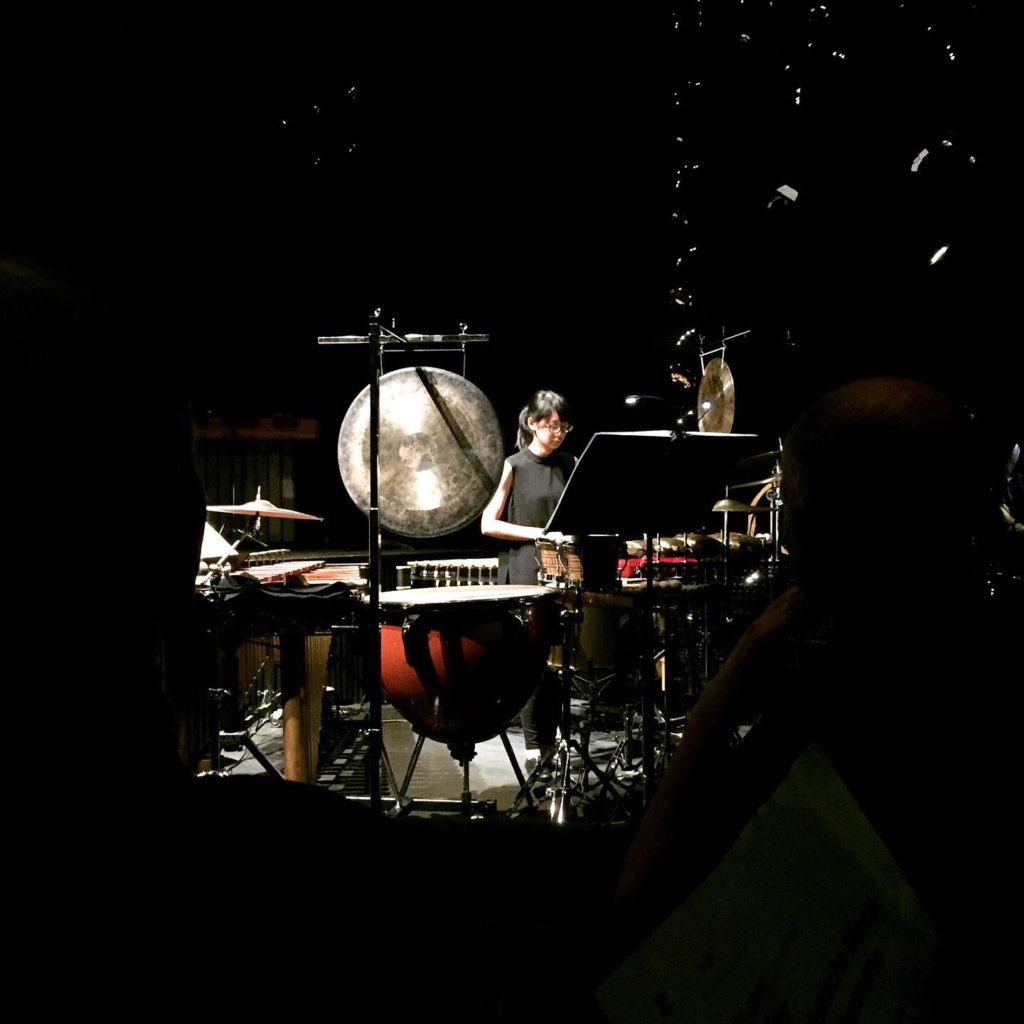Last Fall (I know, big delay), Lachenmann rolled up to Zürich and had a series of events that ran the course of a weekend, including several concerts at ZHdK. This all coincided with his one of performances as the narrator in his Ballopera Das Mädchen mit den Schwefelhölzern alongside a chamber concert and talk-back that the Züri Opera house had hosted. This was near the end of the run of the his show—if I remember correctly, there was only the closing show left after this weekend—and amazingly, from an American’s perspective of sales rates for contemporary classical productions, all of the shows were sold out.

Luckily, I was able to get a ticket through ZHdK, and the seats were amazing. But before I get to the Ballopera (it’s a thing now), let me rewind to earlier in the weekend, which started out with a chamber concert performed by ZHdK students and Lachenmann himself. Without getting into too much detail, there were several pieces on the program. The ones that truly stood out were Wiegenmusik, and temA. Wiegenmusik: for it’s truly lush piano writing and harmony, and temA: for the instrumental and coloristic creativity that Lachenmann is known for. Intériur I was masterfully performed, but it’s funny: I think that for an ‘instrumentarium’ that inevitably demands for creative writing, Lachenmann called for a massive battery of instruments, yet, in contrast to his reputation and the presented temA, got little out of each.
ZHdK’s Arc-en-Ciel (the school’s large New Music ensemble) also presented some Lachenmann alongside Morton Feldman’s Rothko Chapel. I spoke with some of the players afterwards, and they mentioned that Lachenmann really took the time to work through everything with the ensemble. The players from the chamber concert expressed the same thing to me, which leads me to believe it was a truly exceptional rehearsal experience. I know, had I been in their position, it would have meant the world to me, to have someone of Lachenmann’s stature not simply dip in for the dress and peace out after the concert (he attended all the post-concert social gatherings). In this way he served as a role-model for how to treat colleagues, students, or even just fans.

Das Mädchen was also an interesting experience. There are many political aspects to the work and the production itself, which I will get into in a second. The production was stunning, and the opulence of the orchestra on hand, alongside the fact that it was spatialized throughout the opera house, was really put to use beautifully within the musical experience. The first half of the piece was revelatory orchestral writing, after which, the music (reflecting the content of the narrative) flagged and died away . I wonder if the music would have been so captivating on recording, or whether it is intrinsically linked to how the orchestra is positioned around the audience (bound to the live experience).

Hearing a bunch of Lachenmann’s music live, back-to-back over a weekend, alongside seeing a panel discussion hosted at ZHdK (not the one at the opera house), there were a few things that struck me about Lachenmann’s music and the apparatuses (INSTRUMENTARIUM) surrounding it. Lachenmann is well known for being a Marxist, and his modernist style of music hews close to modernism as a dialectically and progressively grounded historical and aesthetic ideology. There are many contradictions in the the sequence of events I’ve covered in this post to a Marxist, or even dialectic musical-political ideal. On the one hand, I do understand that we live in a society (cue joker), and one has to navigate institutions and realities within that society in order to produce the art one wants. On the other hand, there is something quite ironic about a Ballet, whose principal character’s hope is extinguished by a cold, uncaring (capitalist) society, yet the work was most definitely produced in an iconic type-space of Bourgeoisie/high society, which is nonetheless situated in the economic center of one of the banking capitals of the world.

